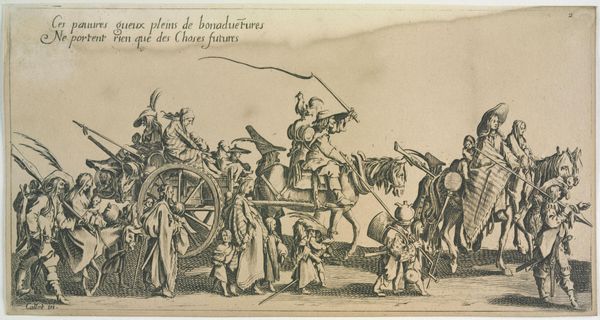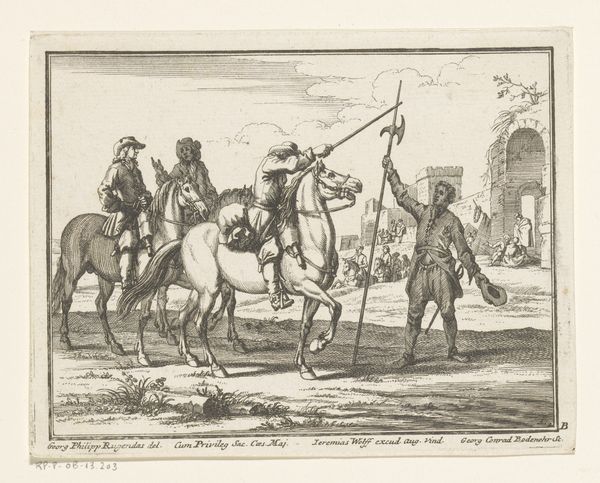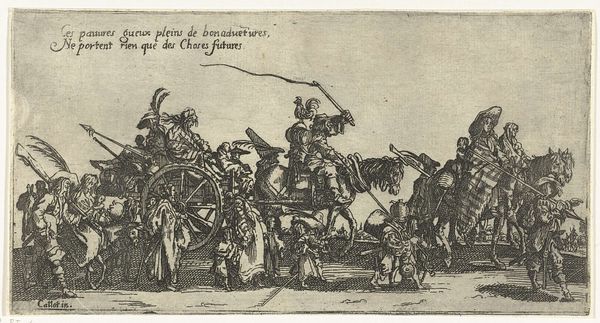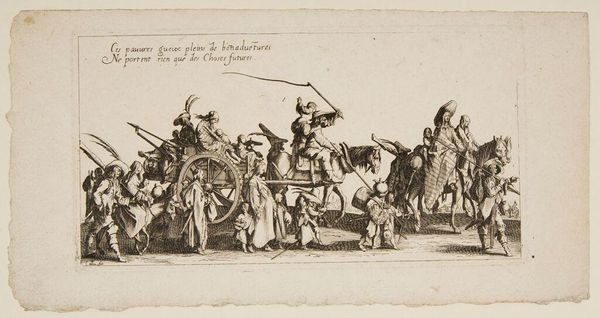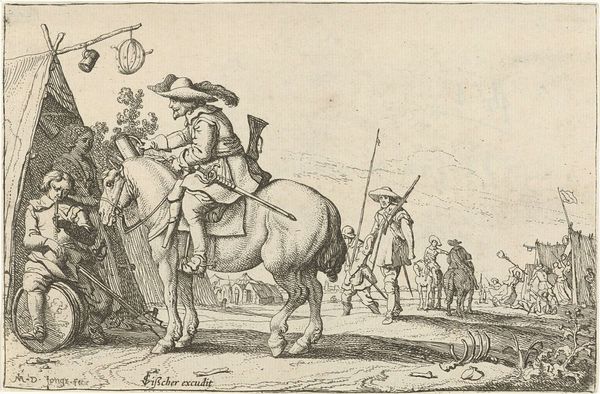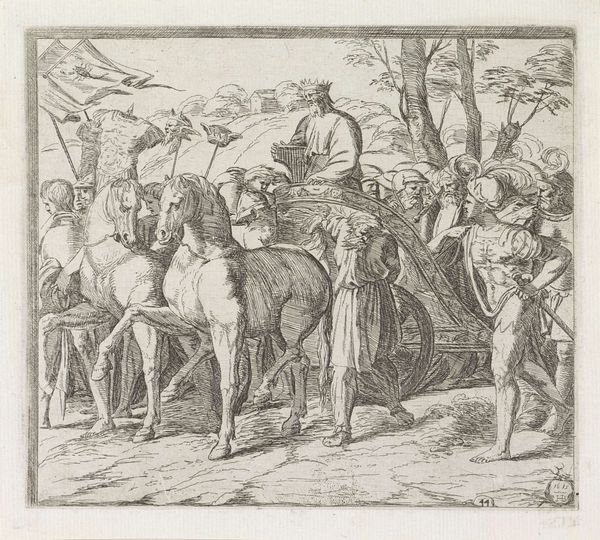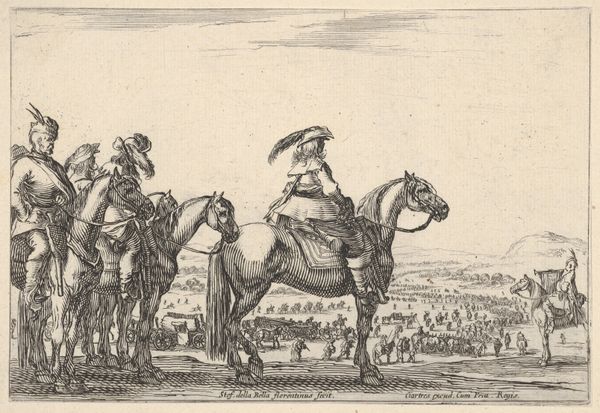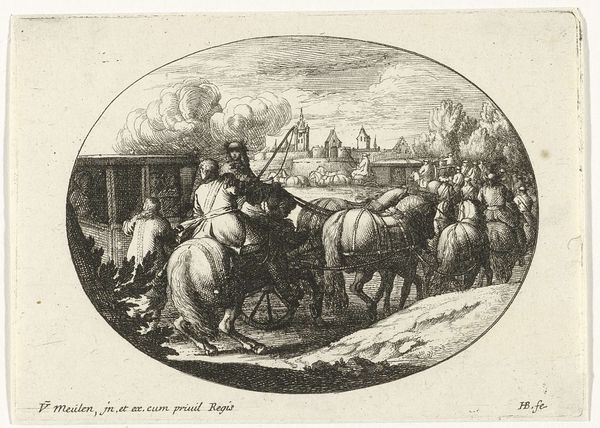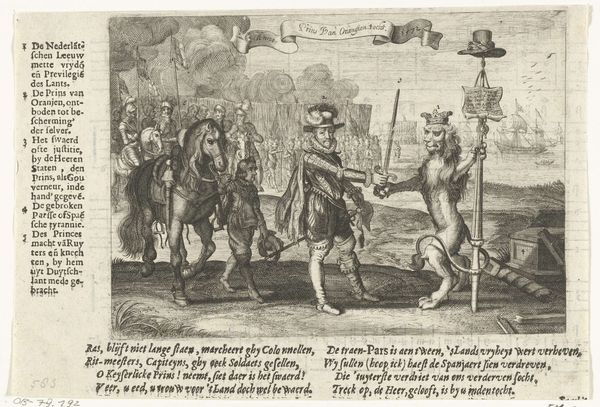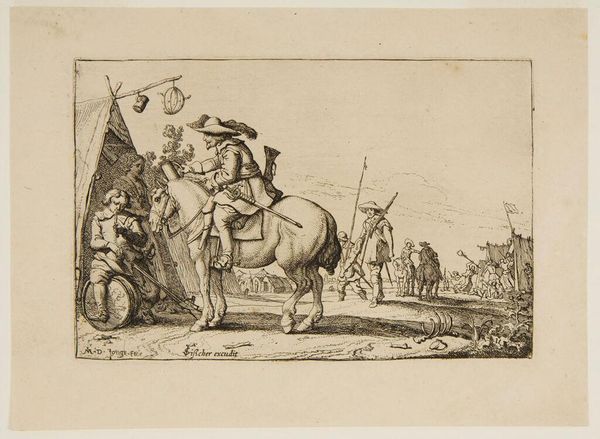
drawing, print, etching, engraving
#
drawing
#
baroque
# print
#
etching
#
landscape
#
figuration
#
engraving
Dimensions: height 120 mm, width 233 mm
Copyright: Rijks Museum: Open Domain
Editor: Here we have "Roma met paarden onderweg", or "Rome with Horses on the Way," by Abraham Casembroot, created sometime between 1603 and 1658. It appears to be an etching or engraving, depicting a procession of figures on horseback. It has a busy and detailed quality that's quite captivating. What do you see in this piece, particularly considering its creation and the materials used? Curator: I'm immediately drawn to the process of engraving, the labor embedded in each etched line. Consider the context: printmaking at this time facilitated the distribution of imagery, essentially democratizing art consumption. What power dynamics do you think are at play in showcasing these figures? The materiality of ink on paper itself becomes a vehicle for conveying social standing. Editor: I hadn't really thought about the labor involved in the printmaking itself, but now that you mention it, the level of detail suggests a considerable time investment. The figures certainly seem wealthy, with elaborate clothing and well-groomed horses. Could the print, therefore, function as a commentary on class and consumption, even back then? Curator: Precisely. Think about who commissioned and consumed these images. Were they landowners wanting to celebrate their own wealth? Moreover, we must ask, from where did Casembroot acquire the materials for this print? Trade networks, both licit and illicit, sustained artistic production. By unpacking this, we uncover the material reality underpinning this baroque landscape. Editor: So it's not just about the image, but about the physical making of the artwork and who had access to it. The lines begin to blur between artwork and commodity. That’s really shifted my perspective on how to view this etching. Curator: Indeed. Recognizing the print as an object deeply embedded in material and social conditions expands our understanding. Editor: Thank you, it highlights the work behind art. Curator: It shows art mirrors, as well as affects society.
Comments
No comments
Be the first to comment and join the conversation on the ultimate creative platform.

